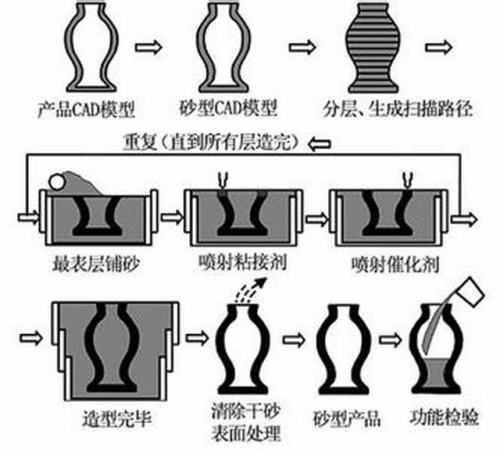
Rapid prototyping technology is a modern manufacturing technology developed in the mid and late 1980s. It is a general technical term for rapidly fabricating three-dimensional physical entities with arbitrary complex shapes driven by CAD models. Unlike traditional removal molding, rapid prototyping is a discrete stacking process. This process can be divided into discrete and stacked processes.
The basic principle: using layered cumulative hair, that is, using CAD modeling, STL file generation, hierarchical slicing and other steps for data processing, the use of computer-controlled molding machine to complete the body of the material manufacturing.
The basic process is: First of all, design the computer three-dimensional model (digital model, CAD model) of the required parts, and then according to the requirements of the process, according to a certain rule, the model is dispersed into a series of ordered units, usually pressed in the Z direction. Definite thickness for discrete (commonly known as layering), the original three-dimensional CAD model into a series of layers; then according to the contour information of each layer, input processing parameters, automatically generate NC code; finally formed by the forming machine A series of layers and automatically join them to get a three-dimensional physical entity.
Features: rapidity, high flexibility, independence from complexity, integration of design and manufacturing, and extensive materials.
At present, there are more than a dozen molding methods for rapid prototyping technology. Each method has its own characteristics and practical range. The more mature and commercial molding methods are: three-dimensional light curing molding, layered solid manufacturing, selective laser sintering, fused deposition molding.
In normal production, this part of the wax can be directly added to the polyolefin processing as an additive, which can increase the gloss and processability of the product. As a lubricant, polyethylene wax (PE wax) has stable chemical properties and good electrical properties. Polyethylene wax has good compatibility with polyethylene, polypropylene, polyvinyl acetate, ethylene-propylene rubber and butyl rubber. It can improve the fluidity of polyethylene, polypropylene and ABS and the release properties of polymethyl methacrylate and polycarbonate. Compared with PVC and other external lubricants, polyethylene wax has a stronger internal lubricating effect.
PE WAX, Polyethylene Wax, PVC Lubricants
HENAN JINHE INDUSTRY CO.,LTD , https://www.hnironoxide.com